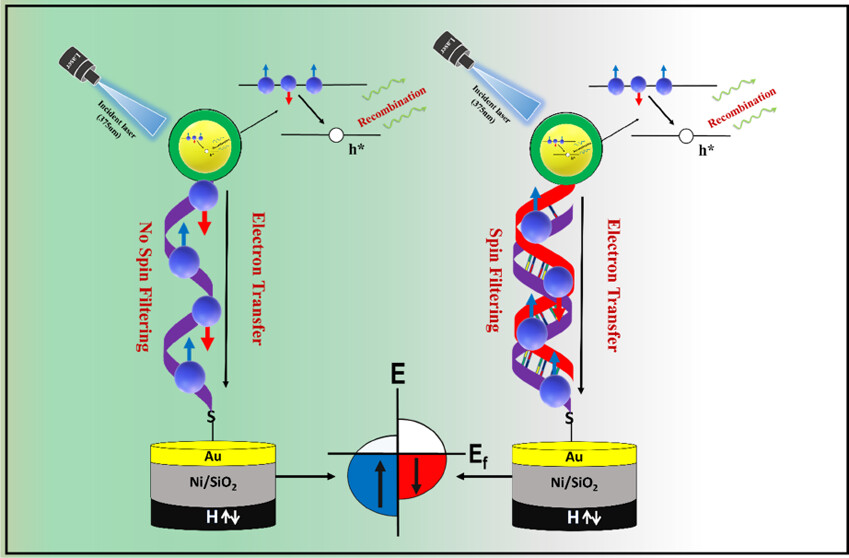The chiral-induced spin selectivity (CISS) effect can distinguish between the spin of electrons as they pass through chiral molecules by backscattering one of the spin components. Herein, we explore the role of the CISS effect in time-correlated single-photon counting measurements to detect DNA hybridization. We observe that the average lifetime of optical excited states of quantum dots attached to double-stranded DNA (dsDNA) varies with directions of the applied magnetic field. Specifically, the difference in the nonradiative average decay lifetime for the two orientations of the applied magnetic field is 2.21 ns in the case of hybridized strands, which is 130 times higher than that observed with quantum dots attached to single-strand DNA. Additionally, we investigate the application of Fourier transform infrared (FTIR) spectroscopy for detecting double-stranded DNA in the presence of a magnetic field, establishing a theoretical framework to substantiate the experimental evidence of magnetic field-dependent FTIR spectroscopy for dsDNA.

The chiral-induced spin selectivity (CISS) effect can distinguish between the spin of electrons as they pass through chiral molecules by backscattering one of the spin components. Herein, we explore the role of the CISS effect in time-correlated single-photon counting measurements to detect DNA hybridization. We observe that the average lifetime of optical excited states of quantum dots attached to double-stranded DNA (dsDNA) varies with directions of the applied magnetic field. Specifically, the difference in the nonradiative average decay lifetime for the two orientations of the applied magnetic field is 2.21 ns in the case of hybridized strands, which is 130 times higher than that observed with quantum dots attached to single-strand DNA. Additionally, we investigate the application of Fourier transform infrared (FTIR) spectroscopy for detecting double-stranded DNA in the presence of a magnetic field, establishing a theoretical framework to substantiate the experimental evidence of magnetic field-dependent FTIR spectroscopy for dsDNA.
